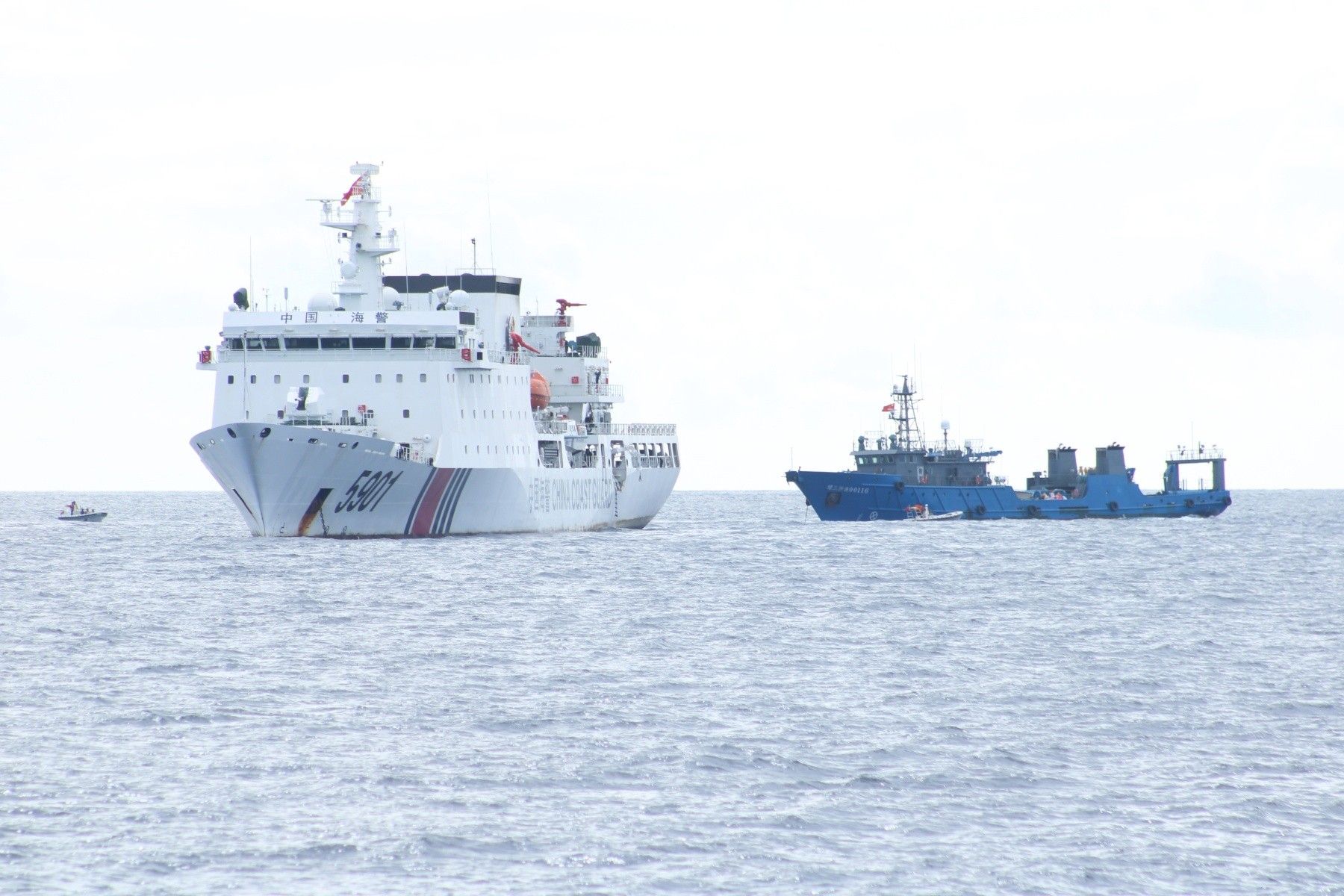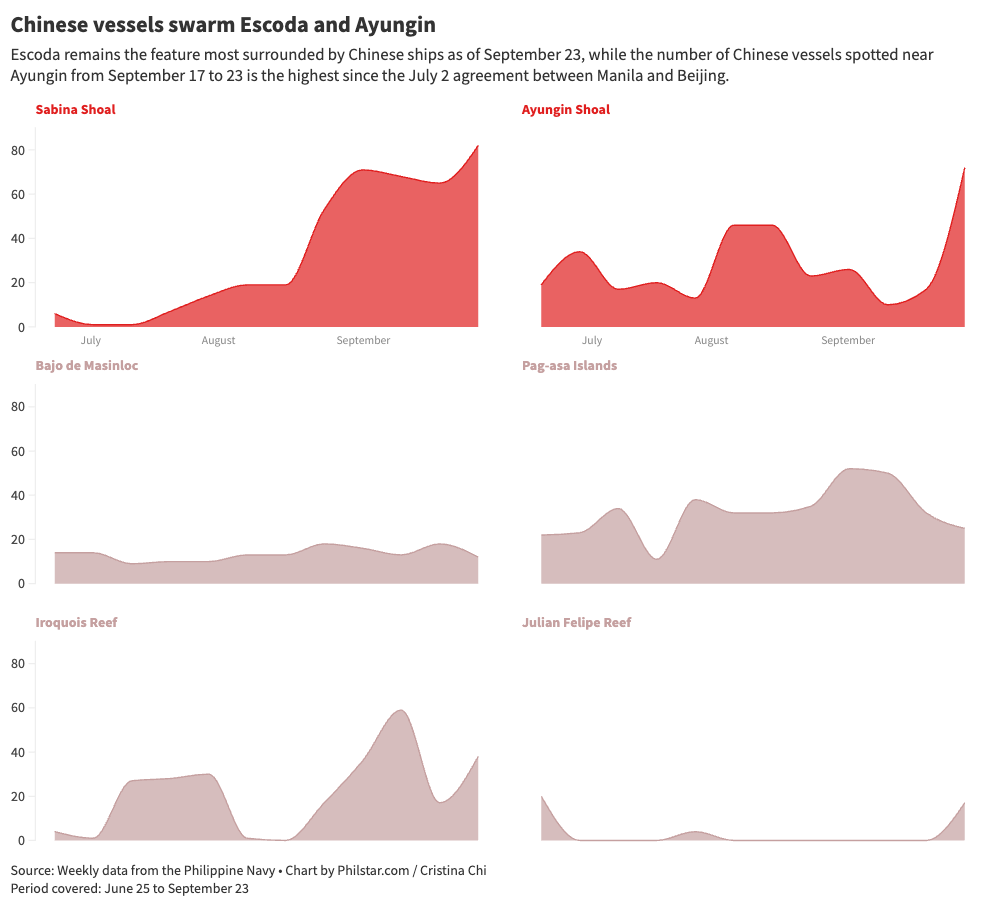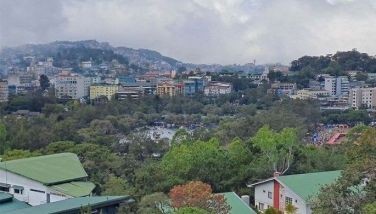Chinese vessels in West Philippine Sea reach new record high

MANILA, Philippines — The number of Chinese ships swarming the West Philippine Sea has climbed to a record-high for the third time this year — a surge partly driven by the four-fold increase in the Chinese vessels near Ayungin Shoal (Second Thomas Shoal).
From September 17 to 23, the Philippine Navy spotted a record 251 Chinese vessels across eight features of the West Philippine Sea, marking a 46% increase from the previous week. This figure surpasses the Navy's earlier high of 207 vessels recorded from September 3 to 9.
Rear Admiral Roy Vincent Trinidad, the Philippine Navy spokesperson for the West Philippine Sea, said the increase can be attributed to the expected surge of Chinese vessels after a storm passes through an area, among other factors.
"This time, this is the biggest increase we've seen," Trinidad said in a press briefing on Tuesday, September 24.

Nearly a third of the vessels (82) are concentrated at Sabina (Escoda) Shoal — the feature that has been the epicenter of China's "illegal" show of force in the Philippines' exclusive economic zone since mid-August.
Monitoring by the Navy shows Chinese warships are increasingly crowding Sabina Shoal, with the number of People's Liberation Army vessels climbing from four to 11.
After weeks of being surrounded by less than 50 Chinese vessels, Ayungin Shoal saw the number of Chinese ships around it increase from 17 last week to 72, with most being Chinese maritime militia vessels.
This is the highest number of Chinese vessels spotted at the contested feature since the Manila and Beijing agreed to de-escalate tensions there two months ago. The arrangement was finalized during bilateral talks in Manila on July 2
RELATED: Philippines-China deal: Clashing claims amid 'fragile truce' over Ayungin
Trinidad said no activity has been reported in Ayungin Shoal so far.
He also maintained that China's naval presence near the Philippines remains within their "force projection capability."
"If we notice, the total number of maritime militia vessels in the entire South China Sea could be approximately 350 to 400. But these are disbursed all over the South China. We have the vietnam side, the Malaysia side," Trinidad said. "If they bring all of this to one particular country, it's within the force projection capability."
Despite Chinese vessels' record show of force in the contested waters, the Navy official said no country "has control over the vast expansive waters of the South China Sea."
"We do not look at this from the perspective of one shoal at a time. We look at the entire West Philippine Sea," Trinidad said.
"The numbers could swing from one particular shoal to another. They could surge number of ships to a particular shoal. We don't care. What is important is we still have the freedom of action to continue performing our mandate," the Navy official said.
China's naval presence in the West Philippine Sea "has been illegal since we started monitoring them," Trinidad said.
"The alarm has already been raised 25 years ago when they started reclamation activities or they started their illegal presence in the West Philippine Sea," the Navy spokesperson added.
While the numbers are the highest the Philippines has seen this year, the government has not received any reports of Chinese vessels' harassment of Filipino fishers.
"Those numbers are not sufficient to cover the entire expanse of the West Philippine Sea. We're doing everything to ensure our fishermen can continue performing their livelihood," he added.
What went before. The surge of Chinese vessels in Ayungin Shoal comes two months after Manila and Beijing signed provisional arrangement that covers resupply missions to BRP Sierra Madre, a warship that was grounded there to reinforce the Philippines' claim to the feature. The deal only covers the disputed feature and not other parts of the West Philippine Sea.
It was the first formal measure that the Philippines and China agreed upon. The actual contents of the deal have not been publicized.
Less than a day after the Department of Foreign Affairs announced the agreement, China issued a statement that the country had agreed to "[tow] away" the BRP Sierra Madre — a claim refuted almost instantly by the Philippines.
Despite both countries' clashing claims over the deal, it has so far held up with no untoward incidents reported near the shoal.
Chinese vessels' repeated run-ins with Philippine vessels are part of Beijing's assertion of its claim of historic rights over nearly the entire South China Sea.
Beijing's territorial rights claim, however, was dismissed in 2016 by an international tribunal that ruled in favor of the Philippines and affirmed its sovereign rights to the resources within 200 nautical miles of its mainland.
- Latest
- Trending




























